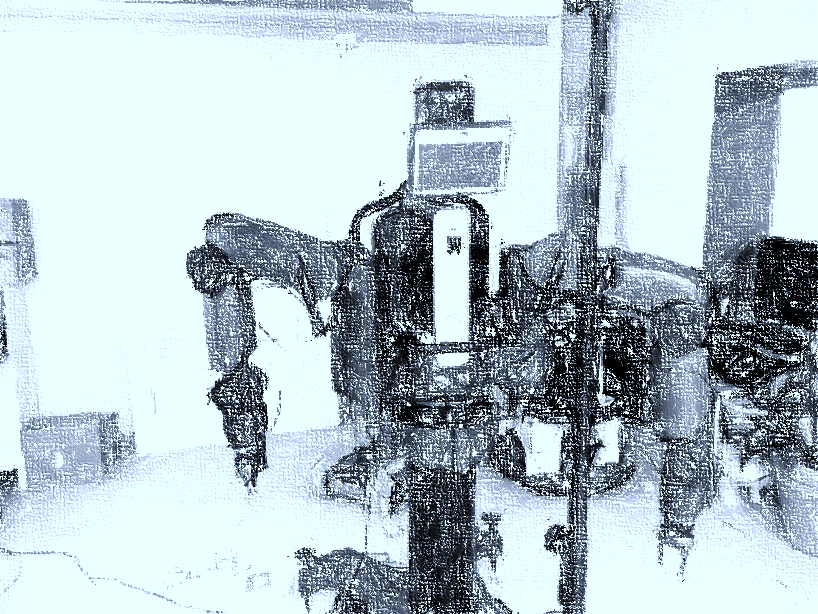As engineers build and develop new technologies, how do they imagine future users? Considering the rapid progress and development of artificial intelligence and robotics, and growing fears surrounding their impact on future societies, this has become a pertinent question. Ideas about future users can impact how new technologies are designed and implemented in our future societies.
Engineering practices evoke user images

So, how do engineers imagine future users? To answer this question, we joined engineers working in two robot laboratories over a period of 6 months, and observed how they developed their technologies and articulated ideas about future users. What we found is that user images and design activities are related. Engineers develop ideas about possible use scenarios as these ideas are evoked by specific design activities; or – how we call them – ‘image-evoking activities’.
To better understand this phenomenon, we need to look at the detailed work that is done in the laboratories: As engineers go about their everyday work, they engage in different sub-actions, such as writing a software code, testing how codes affects the robot’s movements, or sharing these insights within the online community. Together, these sub-actions form broader activities, each with its own goal. We found four such activities from our observations: to distinguish technology work from other types of work, to expand what is technologically possible, to universalize the applicability of the developed technologies, and to make robots human-like.
 With ‘image-evoking’, we mean that each of these activities evoked a set of use scenarios. For example, universalizing applicability caused the engineers to imagine scenarios of users in diverse industries, and making robots human-like came with images of robots replacing humans, in a variety of settings. To think about this breadth and variety of possible use scenarios available to engineers, it may be helpful to envision how these different scenarios form a ‘user image landscape’, with some images far in the background, some blurred and some rather self-evident.
With ‘image-evoking’, we mean that each of these activities evoked a set of use scenarios. For example, universalizing applicability caused the engineers to imagine scenarios of users in diverse industries, and making robots human-like came with images of robots replacing humans, in a variety of settings. To think about this breadth and variety of possible use scenarios available to engineers, it may be helpful to envision how these different scenarios form a ‘user image landscape’, with some images far in the background, some blurred and some rather self-evident.
How can this help technology development?
 Well, technologies may fail if they do not correspond to the users’ wishes or desires. So, there is a need for suitable user images, to ensure that millions of investments into robotics and artificial intelligence do not go to waste. Our study speaks to this need. Through developing a better understanding of how users are imagined in practice, we are now beginning to learn how and where we can improve these images; and better tailor them to our needs and expectations.
Well, technologies may fail if they do not correspond to the users’ wishes or desires. So, there is a need for suitable user images, to ensure that millions of investments into robotics and artificial intelligence do not go to waste. Our study speaks to this need. Through developing a better understanding of how users are imagined in practice, we are now beginning to learn how and where we can improve these images; and better tailor them to our needs and expectations.
Crucially, our findings suggest that we need to be more aware of the locales in which technologies are constructed. We have shown how ideas about future users are created in engineering practice, and these can have an impact on how future technologies are constructed. This means that the user is created within the laboratory, as part of ongoing design practices. So, if we are to change certain practices or ways of imagining future users, we need to consider that our interventions, like user involvement or participatory design, need to fit into the practical realities in the laboratories. They need to connect to what the engineers’ everyday work looks like.

What are the future roles for robots and humans, based on our study?
In our case, multiple future use scenarios became apparent: robots in different industries, in factories, in hospitals, in care facilities. Robots replacing human work, or parts of what humans do at the moment. These all seem possible future scenarios. However, the impact of robots and increased automatization on our future society is the subject of ongoing debates. Millions of jobs might be threatened, but robots could also function as providing assistance or creating new jobs.
In this context, our study shows that there is a lot to learn by studying the context in which robots are built and created. And it implies that we do have to ask ourselves: What roles do we really want for robots and artificial intelligence to fulfill? Do we want them to replace humans? What are our societal needs? Only if we become clearer about our own desires can robot engineers possibly attend to them.

You found this discussion interesting? Please share your opinion in the comments below, or contact me. I am looking forward to hear your ideas!
You can find our original research article published online here for free
Björn Fischer is a PhD student in Technology and Health at KTH in Sweden. His current research focuses on science and technology studies, with a particular interest in engineering and design practices, and the link between technology and use. He is particularly concerned with understanding how technologies can be developed to suit the needs of older people. Email: bjorfisc@kth.se
